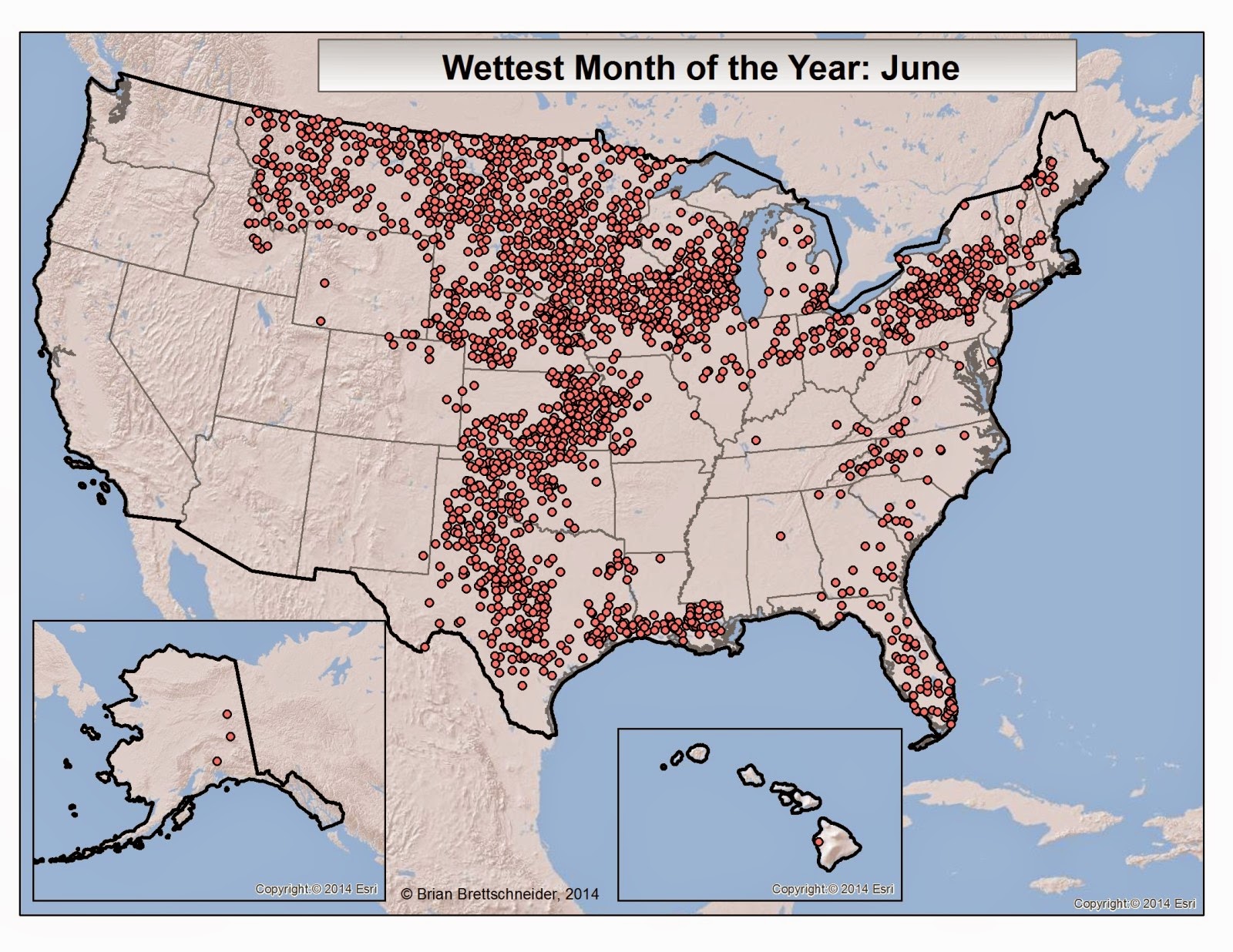Back in 1982, in the Native Village of Angoon, in Southeast Alaska, a Cooperative weather observer recorded 15.20" of rain in a single day. This remarkable value was entered on to a monthly form and submitted to NOAA (via mail) for transcription and archiving. Once this value was entered into the system, any database query could identify it as the single greatest 24-hour precipitation event in Alaska history. Because Angoon is located in Southeast Alaska, one of the wettest regions in the world, it was assumed that this staggering total was entirely plausible – even though Angoon lies in a rain shadow and is the driest location in all of Southeast Alaska.
Figure 1. Location of Angoon, Alaska.
Figure 2. Aerial view of Angoon from fixed-wind aircraft.
By sheer coincidence, in 2009 I began working for a company that was involved in drafting an Environmental Impact Statement for a proposed land-based airport in Angoon. When I came across this 15.20" precipitation event, something didn't seem right about it. Doing a little digging I came across the original observer form from 1982. The precipitation total on October 12th clearly indicates a reading of 15.20".
Figure 3. Scanned observation form from Angoon for October 1982.
Knowing that the average annual precipitation for Angoon was around 35" - 40", it did not seem possible that nearly half the annual precipitation could fall on a single day. That only happens in desert areas. In fact, when all of the precipitation totals for a 12-month period were added together for Angoon in 1982, it came out to over 200". Clearly something was amiss. But what was it?
Surely this type of outlier would have been noticed in the previous 30 years, right? Perhaps it was. However, no one had fully documented the process. Therefore, I set out to write-up my findings and pass it along to the NWS in Juneau. As fate would have it, Carl Trypaluk, who was working with NOAA in Silver Spring, Maryland, had also noticed this observation while developing new precipitation recurrence intervals as part of the NOAA Atlas 14 project. Carl wrote up his findings and also sent it to the NWS in Juneau shortly before I had done so. Since we both had researched the same error at nearly the same time, we decided to join forces and investigate further.
What happened
As luck would have it, the gentleman who recorded the precipitation at the time is still alive and was willing to talk with me about it from his home in Ketchikan. What kind of luck is that! It turns out that the long-time observer in Angoon had passed away the previous year and the gentleman now in Ketchikan continued the observations to preserve the data continuity. Unfortunately, before he was able to be trained by the NWS staff in Juneau, he collected several months of precipitation data using an incorrect measurement technique – which magnified all precipitation readings by a factor of 10. In hindsight, the 15.20" should have been 1.52".
Figure 4. Location of the observation station in 1982. The station burned down c. 1985. The red box shows the approximate footprint of the building that the station was next to.
Changing the record
Purging a record from the books is not an easy task. There is a tremendous inertia that must be overcome. The National Climate Data Center (NCDC) has a procedure for evaluating state records. It involves the formation of an ad hoc committee to evaluate all relevant information. The committee then decides whether or not to accept or reject the validity of the record. In the case of Angoon, a committee was formed and the recommendation of the committee was to strike the Angoon record from the books. Now, the Director of the NCDC must sign-off on the recommendation. Presumably that will happen sooner rather than later. However, changing the record is a two-step process. Step 1 was resolving the status of the Angoon record. Step 2 is declaring a new state precipitation record. Step 1 is nearly complete, but Step 2 .....
Seward, Alaska
In the Olympics, when the winner of an event is disqualified after the fact, the second place finisher is promoted into first place and is awarded the gold medal. Once the Angoon record is moved out of first place, who gets to move up? The answer is Seward. They received 15.05" of rain on October 10, 1986.
On October 3rd, the State Climate Extreme's Committee concurred with our findings and placed Seaward at the top of Alaska's precipitation record list.
Figure 5. Rainfall totals in Southcentral Alaska on October 10, 1986. The value for Seward is circled in red.
How do the people of Seward feel about this? There's a saying that as long as the weather is extreme, you might as well set a record. However, the Chamber of Commerce might not want the designation of having the wettest day in Alaska's history. Whatever the case, records are an important part of the climate history of Alaska and every other place in the world. We need to know the bounds of the climate system to make effective public policy decisions. Fixing this record is a small contribution toward that goal.
Note: Figures 1, 2, 4, and 5 are copyrighted by Brian Brettschneider. Figure 3 is courtesy of NOAA.
























